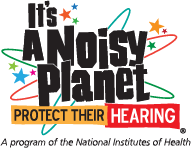Did you know that babies with normal hearing start developing speech and language skills as soon as they are born? By six months of age, babies can recognize the basic sounds of their native language. But babies and young children with undetected hearing loss can have delays in developing these important skills.

Two to three of every 1,000 children in the United States are born with detectable hearing loss in one or both ears. If you were born in the U.S. after 2000, you were probably screened for hearing loss before leaving the hospital, thanks to the Early Hearing Detection and Intervention (EDHI) Act. Newborn hearing screening can help families get early support for their babies if hearing loss is detected. Research supported by the National Institute on Deafness and Other Communication Disorders (NIDCD) contributed to making universal newborn hearing screening standard care in the U.S.
In many less developed regions across the globe, babies and young children are not regularly screened for hearing loss. The screening device used in the U.S. can be too expensive for health centers and hospitals in these regions to buy, and fewer families have access to health care. But one day soon, more families worldwide could have access to newborn hearing screening. A team of scientists at the University of Washington has designed a low-cost hearing screening system that uses inexpensive earbuds, a microphone, and a smartphone to test babies and young children for hearing loss. An article describing the results of their research, which was funded in part by NIDCD, was published in Nature Biomedical Engineering in 2022.
In this screening system, a soft earbud is placed in the baby’s ear. Two audio speakers send two different tones through the earbud. The sounds travel through the baby’s ear to the cochlea, a snail-shaped structure in the inner ear the size of a pencil eraser. If a baby has normal hearing, the sounds vibrate special cells inside the cochlea and emit an echo response that a sensitive microphone can detect. If no echo response is detected, the baby might have hearing loss.
The researchers tested their hearing screening system in more than 100 young patients, including children with known hearing loss, in three hearing clinics in the U.S. They found that lower cost earbuds transmit an easy-to-measure tone—even when there is background noise. The researchers also designed a smartphone app to capture and interpret the echo response, providing critical information about hearing function.
The researchers are working with experts to use the simplified testing device in a newborn hearing screening project in Kenya. This will help the research team refine the system for specific communities and address any unique challenges, including how to get the devices into other clinics and regions that need them. The goal of improving hearing health care for all children and families may soon be within reach—using simple, low-cost devices that are familiar to many.
Last Updated Date



